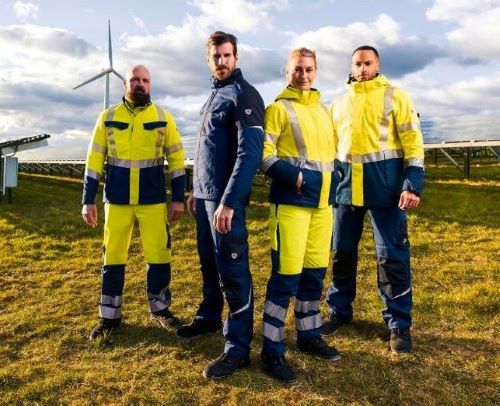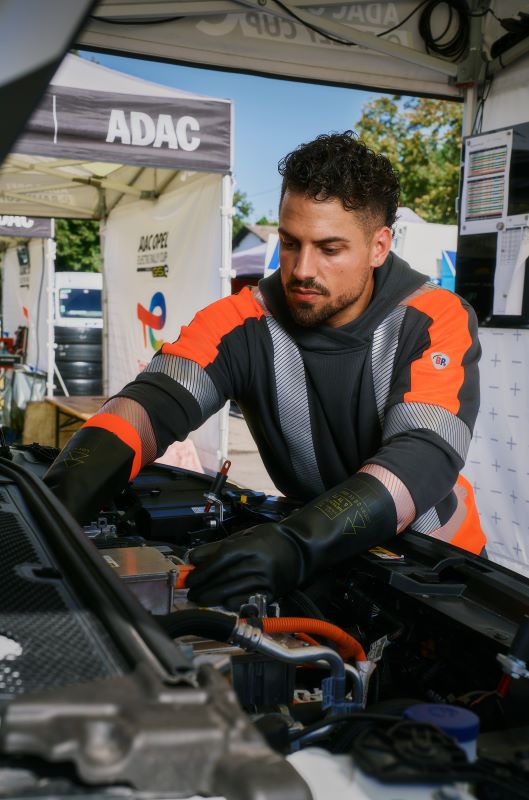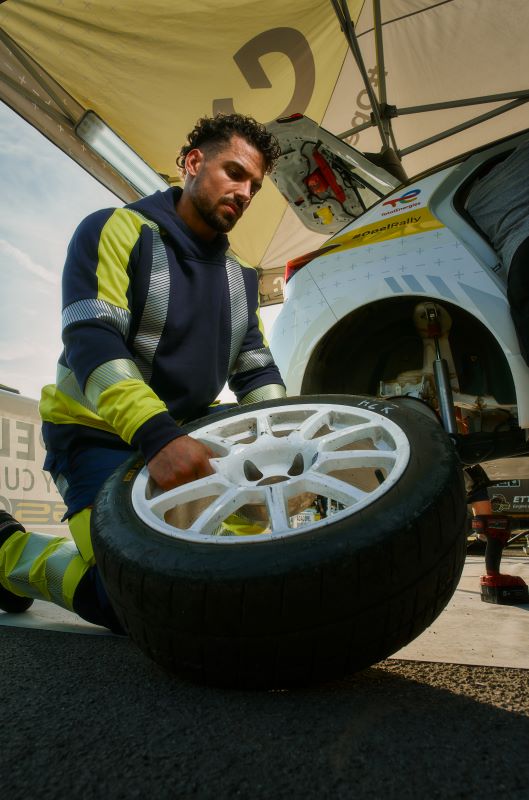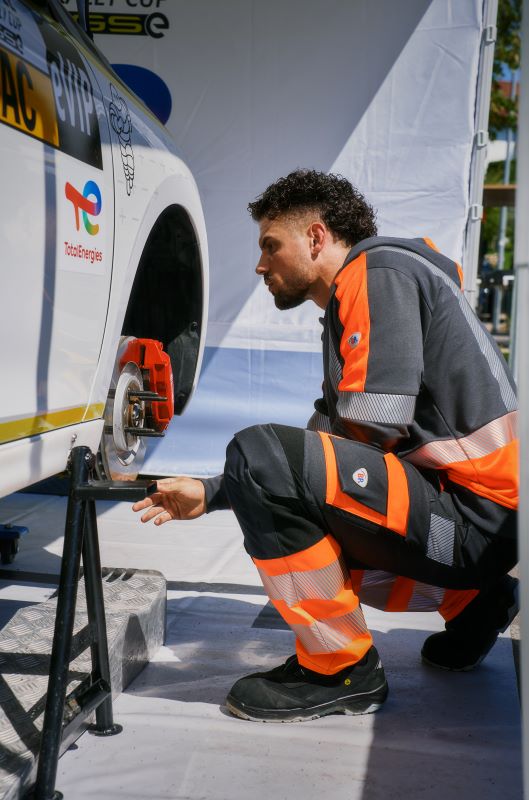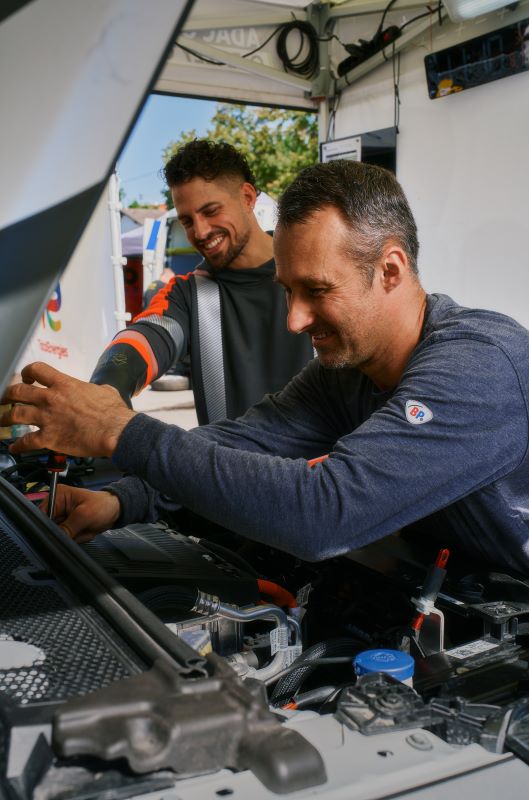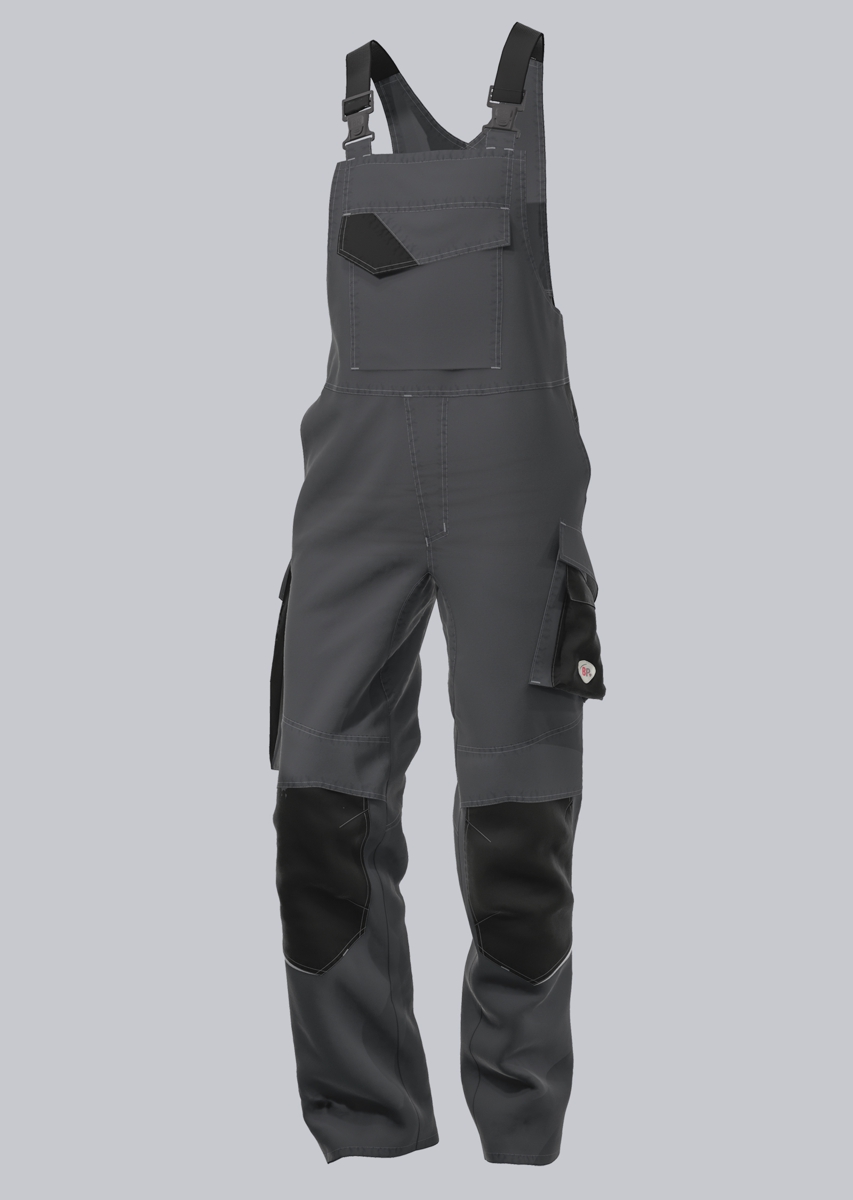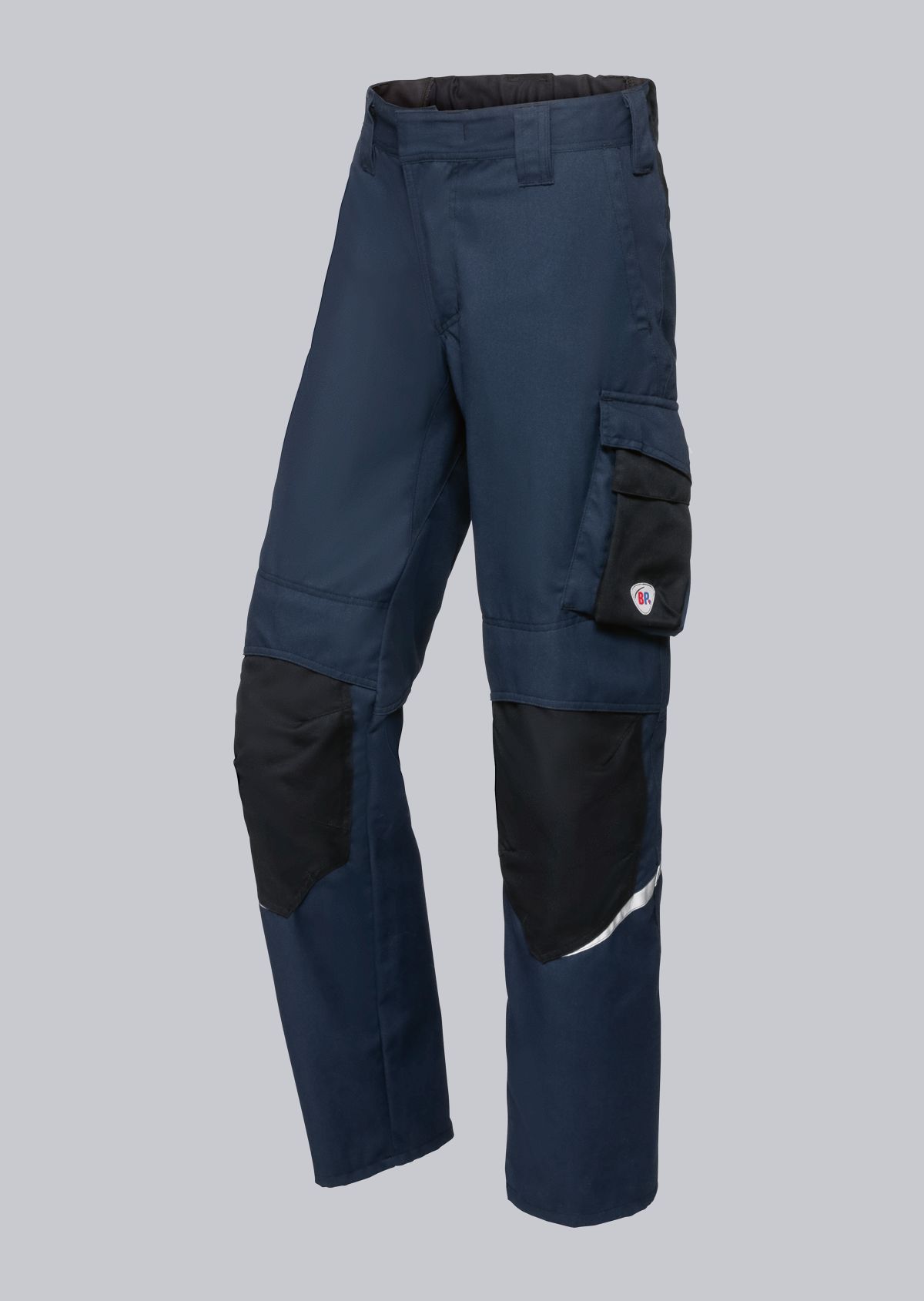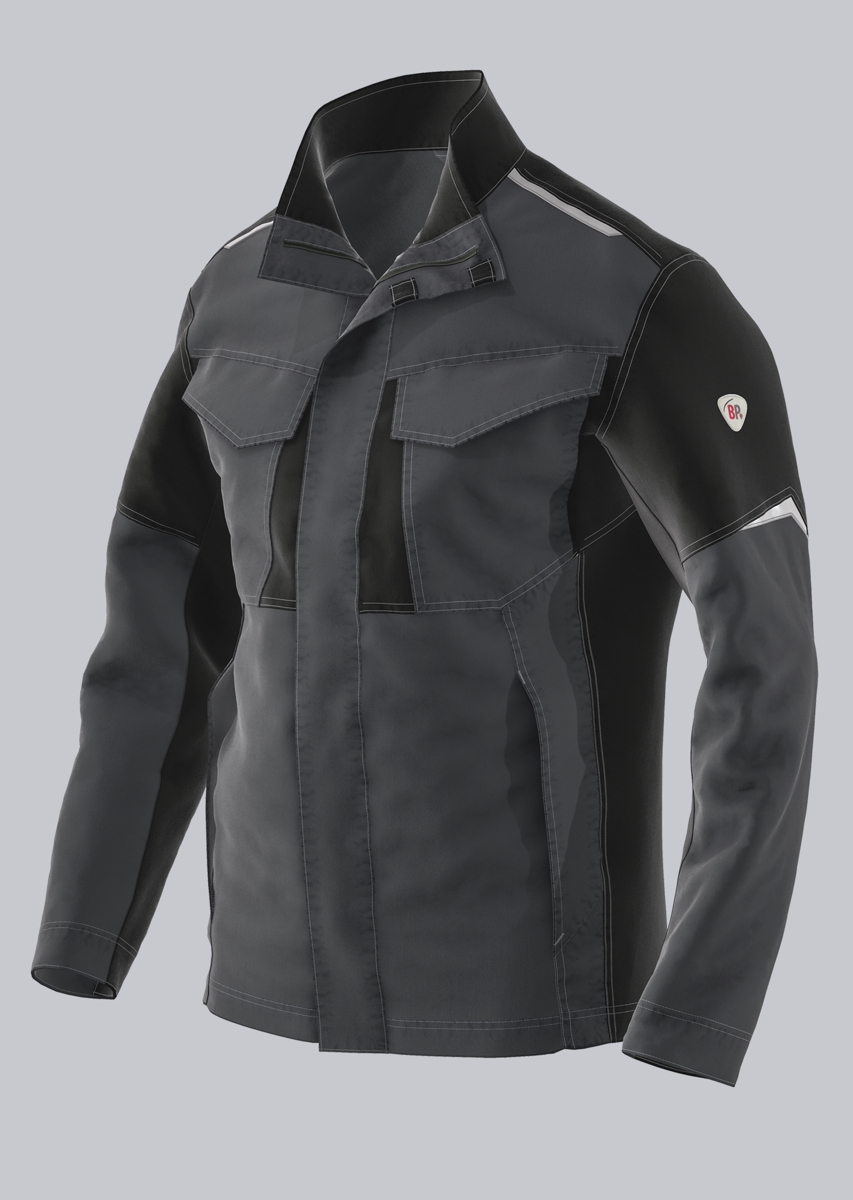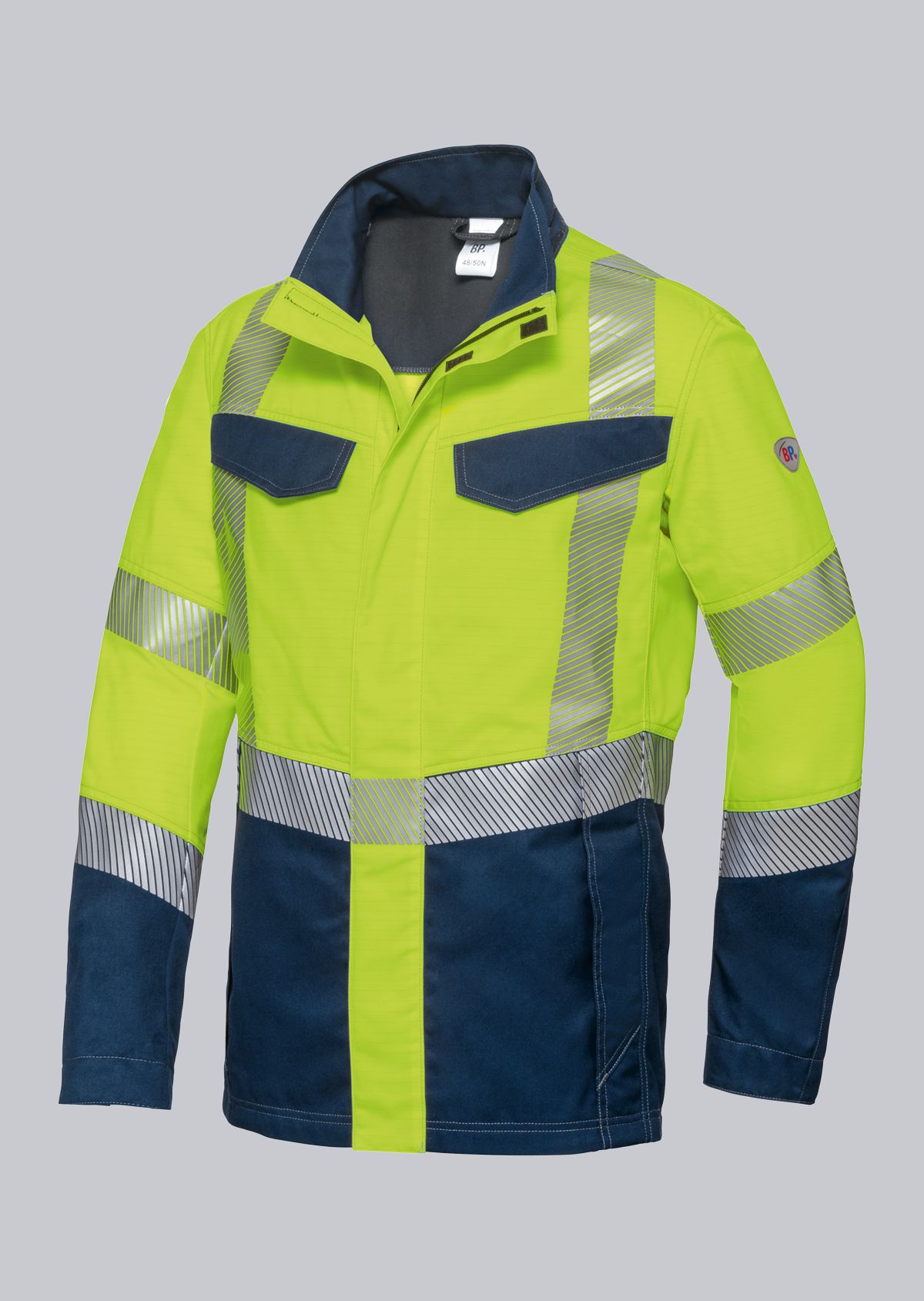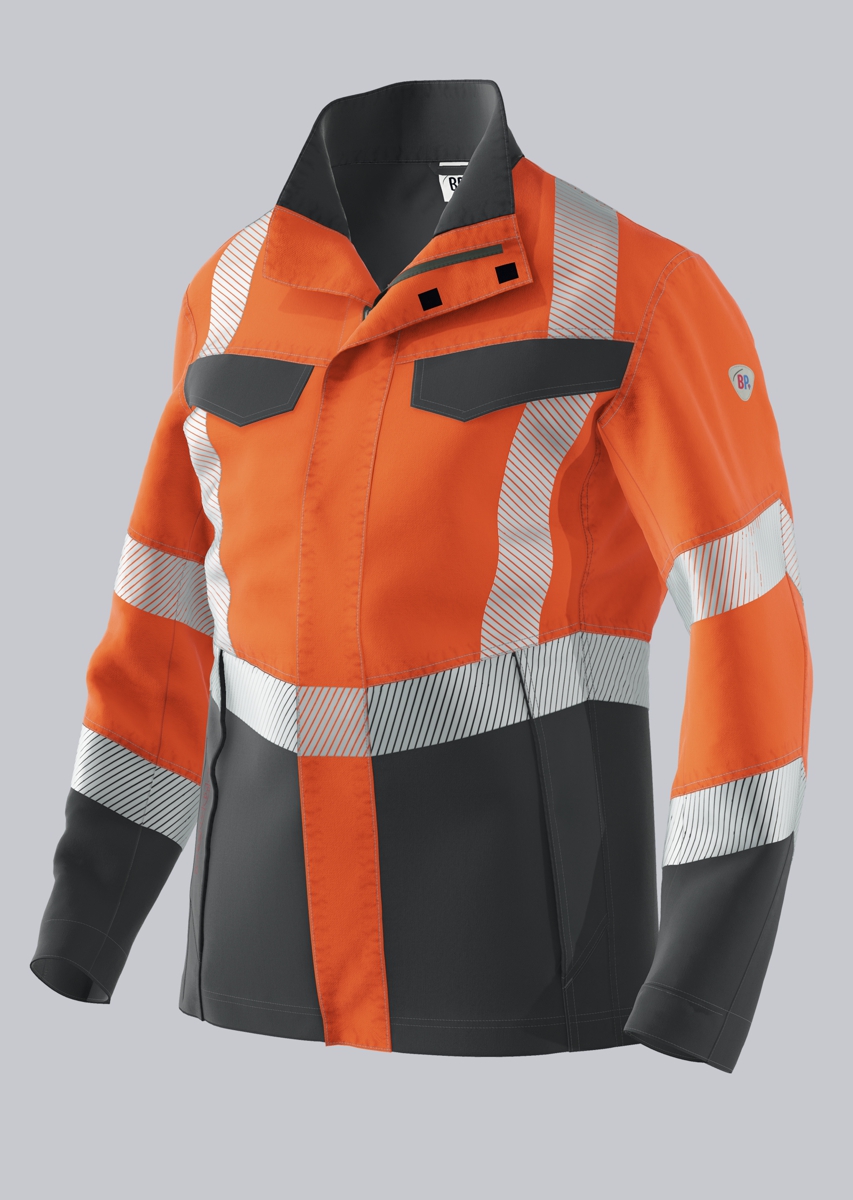Multi-standard protective clothing - the clothing solution for e-mobility and the electrical trade
When choosing the right protective clothing, more and more companies are therefore opting not just for pure arc fault protection, but for multi-standard protective clothing in order to protect their employees in the best possible way and against as many risks as possible. On the one hand, this allows them to play it safe and comply with their high internal safety standards - a very important aspect, especially in times of a rampant shortage of skilled labour. On the other hand, employees can also be deployed more flexibly because they can carry out all work on electric cars, provided they have the necessary qualifications.
Leichtigkeit steht im Fokus
Modern multi-standard protective clothing no longer has much in common with the armour-like PPE of the past. This is mainly due to modern fabric blends. For example, manufacturers mix inherently flame-retardant fibres such as modacrylic and aramid with cotton, polyamide, polyester and antistatic fibres. In arc fault protection class 1, this results in a total weight of just 245 g/m². In protection class 2, only the particularly vulnerable areas at the front are equipped with two layers.
Working without resistance
In addition to the lightness of the PPE, ergonomics also play a decisive role in wearer comfort. If the clothing adapts to the movements and people do not have to work against resistance, they automatically perceive the PPE as much lighter. ‘In terms of feel and lightness, modern multi-standard protective clothing is absolutely comparable to contemporary workwear,’ summarises expert Heike Altenhofen. With this in mind, it makes perfect sense to use multi-standard protective clothing for all work on electric cars and to provide employees with the best possible protection.
A speciality at BP: there is also a large selection of multi-standard protective clothing for women.


